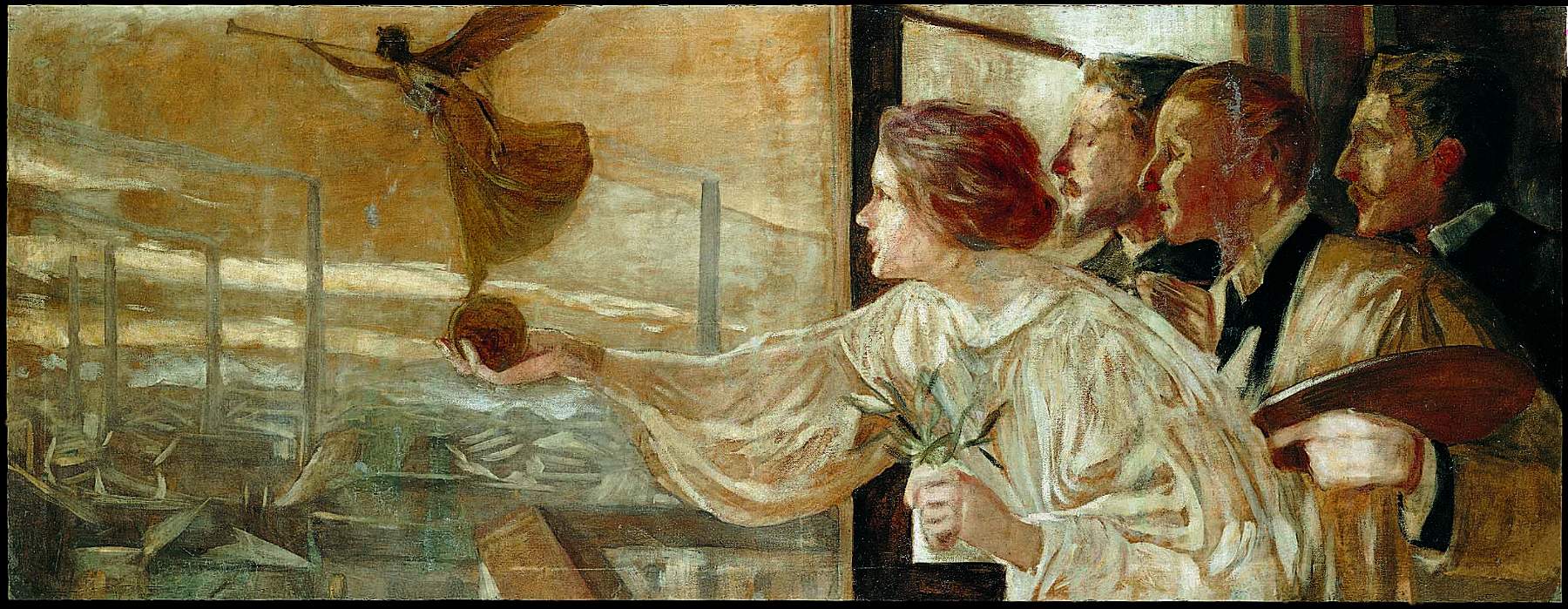From December 8, 2018 to April 28, 2019, the Palazzo Pretorio in Pontedera is hosting the exhibition Horizons of Water Between Painting and Decorative Arts. Galileo Chini and other protagonists of the early 20th century, which features the figure of Galileo Chini (Florence, 1873 - 1956), one of the most prominent figures of international Modernism, and a number of artists who shared with him the experiences of the period, from Symbolism to Art Nouveau, from the Viennese Secession to the suggestions of Orientalism. The theme of the exhibition is water, a recurring subject in those artistic movements that, between the 19th and 20th centuries, were identified with Symbolism and Divisionism.
Afil rouge that accompanies the visitor throughout the exhibition, water constitutes a constant note in all of Chini’s production and recounts the artist’s attunement with backgrounds now riverine, now marine, from the Arno to the river of Bangkok, from Venice to the seaside and spa towns of Viareggio, Montecatini and Salsomaggiore. Chini’s ceramic production is not exempt either, the field, among the many in which he expressed himself, that gave him the opportunity to enter the international circuit and to impose himself since 1898 among the first interpreters of Art Nouveau in Italy: the subjects of marine fauna are protagonists in the decoration of vases, plates, and tiles where the artist competes with nature in the variety of compositions and in the chromatic rendering through astonishing lustrous glazes.
Opening the exhibition, in the first room, is the painting La quiete, exhibited in 1901 at the fourth edition of the Venice International Biennial, an event that to a greater extent contributed to the artist’s successes and his cosmopolitan dimension. In fact, it was in the lagoon city that in 1907 the King of Siam had the opportunity to appreciate the installation of the Dream Room, deciding to entrust this multifaceted artist, who distinguished himself not only as a ceramist but also as an illustrator, set designer, painter and decorator, with the decoration of the new Throne Palace in Bangkok. The Thai experience had a decisive influence on Galileo Chini’s artistic background, involving easel painting, decoration and ceramic production: it was precisely his direct encounter with the Orient, which also earned Chini the attribution by Puccini of the set design for Turandot, that made his Orientalism not mannerist.
The exhibition, curated by Filippo Bacci di Capaci and Maurizia Bonatti Bacchini, is divided into four sections: Symbolism and Divisionism, Water as the Subject of Decorative Production, Orientalism, and the Secessionist and Klimtian phases, each of which presents paintings, sketches and ceramic artifacts to approach the visitor to the complexity of Galileo Chini’s artistic making. And by his side, in a constant comparison, the works of the other great protagonists of the Italian twentieth century, linked to him by friendship, work or cultural harmony: Plinio Nomellini, a fraternal friend, with whom he shared the undertaking of the Sala del Sogno; Giorgio Kienerk, who was an early popularizer of Art Nouveau in the Tuscan sphere; Leonardo Bistolfi, among the promoters of the International Exhibition of Modern Decorative Art organized in Turin in 1902; Duilio Cambellotti, the greatest representative of Deco in Rome; and, again, the Emilian Aroldo Bonzagni and the Tuscans Moses Levy, Lorenzo Viani and Salvino Tofanari. Also on display will be a tapestry by Vittorio Zecchin, the Venetian artist.most translated the Klimtian spirit into Italy and, like Chini, filtered the decorative language of the Viennese Secession. Finally, there will also be an extraordinary find: Auguste Rodin’s plaster cast La Danaide, the object of an exchange between the sculptor and Galileo Chini during a meeting they probably had in Venice in 1901.
The exhibition is open Tuesday through Friday 10 a.m.-7 p.m., Saturday, Sunday and holidays 10 a.m.-8 p.m., Monday is closed. Entrance fee: full € 8, reduced € 6. Info at www.palp-pontedera.it.
Pictured: Galileo Chini, The Factory (1901; oil on canvas, 66 x 172 cm; Genoa, Wolfsoniana)
 |
| Galileo Chini and the protagonists of Italian Symbolism and Art Nouveau on display in Pontedera |
Warning: the translation into English of the original Italian article was created using automatic tools. We undertake to review all articles, but we do not guarantee the total absence of inaccuracies in the translation due to the program. You can find the original by clicking on the ITA button. If you find any mistake,please contact us.